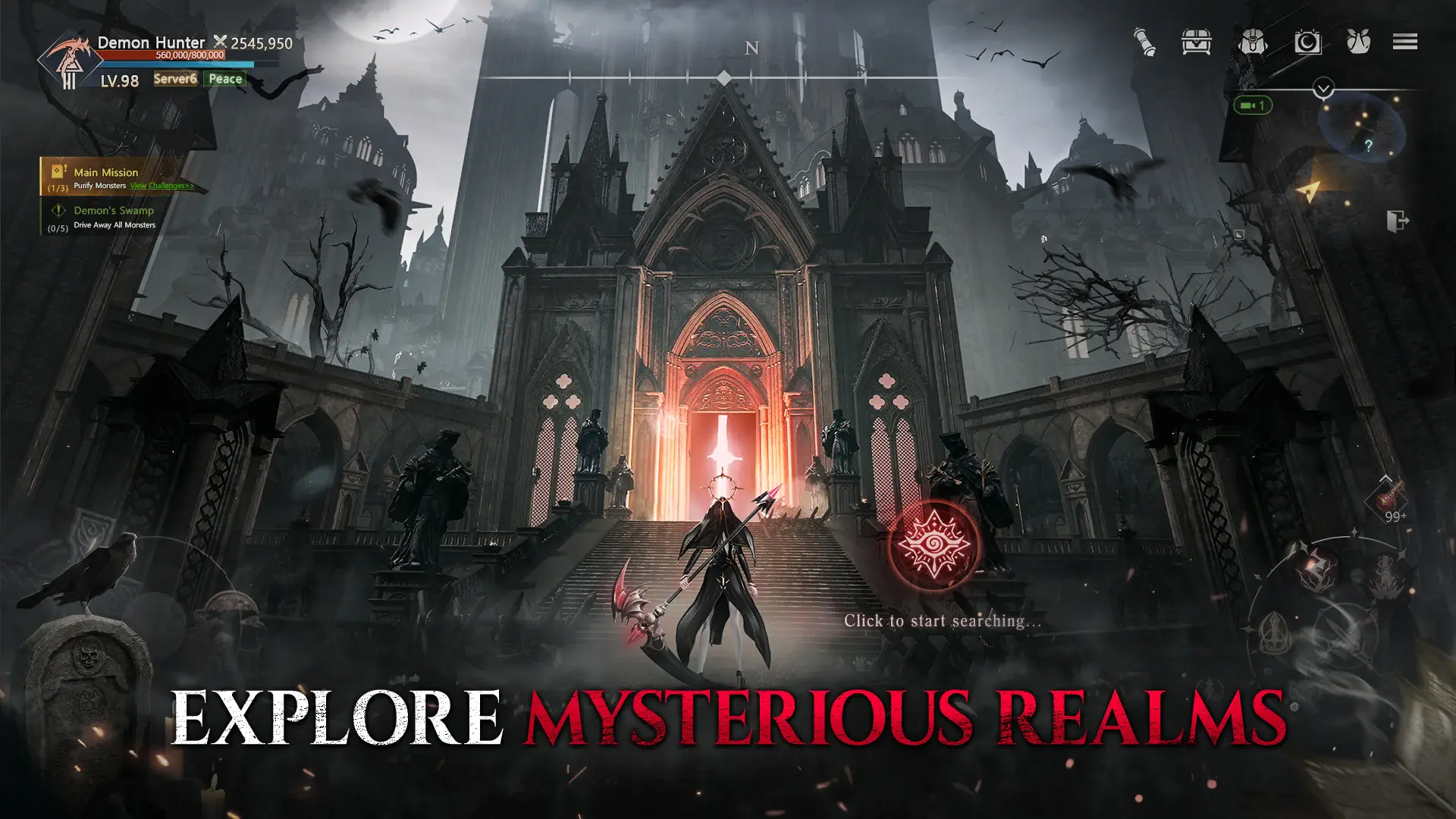Age of Ashes: Dark Nuns Beginner’s Guide With Everything You Need to Know to Get Started

Age of Ashes: Dark Nuns is a dark-themed MMORPG that brings religious horror and demonic warfare to the standard mobile RPG formula. The game centers on a chosen nun exorcist in a devastated world filled with cursed hospitals, haunted towers, and armies of demonic entities. The setting is grim, the visuals are polished, and the core systems offer a mix of auto-play convenience and skill-based encounters. Beneath the stylized aesthetic is a straightforward MMORPG structure—class selection, gear upgrades, open-world exploration, and a mix of solo and multiplayer combat.
This guide lays out the essentials: what kind of classes you can expect, how combat and controls work, how dungeons are designed, and what systems you’ll interact with to grow stronger. Whether you’re familiar with mobile MMOs or trying one for the first time, here’s how Age of Ashes works at its core.
The Different Classes
In Age of Ashes: Dark Nuns, players can choose from five known classes, each offering a distinct playstyle and combat identity. While it’s unclear if all five will be available at launch, they’ve been featured across pre-release materials and previews. Each class is gender-locked, visually distinct, and tailored to a specific approach to battle—ranged, melee, tanky, or burst-based.

- Sorcerer: A long-range caster with powerful area-of-effect spells. Best suited for players who want to clear groups fast from a distance. Fragile but deadly when managed carefully.
- Dragon Knight: A spear-wielding melee class with dragon-themed abilities. Strong in one-on-one damage output and burst strikes. Less suited for handling large groups or ranged harassment.
- Soul Slaying Officer: Uses a giant scythe for high-mobility melee attacks. Blends physical and magical abilities. Effective for hit-and-run tactics but requires timing and positioning.
- Divine Warrior: A frontline melee class with heavy armor and reliable damage. Great for tanking and close-range control. Slower than other classes but built to endure.
- Demon Hunter: Equipped with a one-handed crossbow, this class specializes in precise ranged attacks. Agile and efficient at kiting enemies, but not built to withstand prolonged close combat.
Keep in mind that these are the class names for the game in development, but since all the previews are in Korean, they might vary slightly on the final release. Regardless, each class plays differently even in auto-combat. Ranged classes reposition more frequently, while melee classes tend to press forward. Skill usage varies based on cooldowns and combo mechanics, making manual play more rewarding once you’re familiar with your toolkit. Feel free to read our tips and tricks for Age of Ashes: Dark Nuns to learn more useful pointers for this game.
Controls and Combat
Combat in Age of Ashes uses a mix of auto-systems and manual controls. You move using a virtual joystick on the bottom left of the screen and use skills on the right side. Auto-combat handles targeting, skill usage, and pathing when enabled, but you can toggle it off at any time.

The game encourages manual play for tougher content. Dodging boss attacks, triggering skill combos, and reacting to environmental hazards all benefit from real-time input. Each skill has its own cooldown and some can chain into others for enhanced effects, which auto-combat doesn’t always optimize.
There’s also an auto-navigation system that moves your character between quest objectives. This makes grinding easy but can be interrupted if you need to react or take control during a difficult encounter.
Dungeons and Environmental Hazards
Dungeons in Age of Ashes are more than just enclosed combat arenas. They feature thematic elements like poison traps, gas vents, pressure plates, and maze-like corridors that affect how you move and fight. These areas are designed to break up the flow of combat and reward players who pay attention.
Most dungeons follow a linear structure with enemy waves and a boss at the end. Some include puzzles or switches that must be activated to proceed, though nothing overly complex. Traps add a layer of threat that’s best handled manually, as auto-play may not react in time.
Bosses have patterns that can be read and avoided with good timing, but they’re usually designed to push your class’s strengths and weaknesses—ranged classes must avoid tracking attacks, while melee classes need to watch for AoE knockbacks.
Gear, Titles, and Character Progression
Gear is central to your power. You’ll earn weapons, armor, and accessories from quests, dungeons, and bosses. Higher-tier gear includes set bonuses and visual upgrades. Upgrades can be done using standard enhancement materials and duplicates for refinement.
Titles offer passive stat bonuses and are unlocked through achievements or milestones. Once unlocked, you can level them up to further boost your stats. It’s an easy system to overlook, but essential for keeping up with power scaling.

Wings and mounts also boost your stats. Even though they definitely add to your aesthetic appeal, these features are not just for looks. In other words, upgrading them gives combat advantages, including increased movement speed and bonus defense. They’re also tied to progression systems like daily quests and event milestones.
Skills and passives can be upgraded separately. Skill builds aren’t overly complex, but prioritizing certain abilities based on your class’s strengths can increase efficiency in dungeons and PvP.
Open World Exploration and Quest Flow
The game’s world is fully open with seamless transitions between areas. Main story quests are chained through auto-navigation, but the world allows for detours, side paths, and optional interactions. Hidden chests and rare enemies sometimes appear off the main route.
Quests are typical for mobile MMOs—kill counts, fetch objectives, NPC interactions—but the smooth flow keeps you moving. World design emphasizes verticality, allowing you to ascend towers or descend into corrupted ruins without loading screens.
Progression is tied to your level, equipment score, and feature unlocks, which roll out gradually. As you progress, you’ll unlock multiplayer modes, cross-server features, and time-limited events.
Multiplayer Features and Cross-Server Content
Age of Ashes features large-scale PvP and co-op systems. Group dungeons, cross-server boss raids, and siege events let hundreds of players participate simultaneously. These events often come with seasonal rankings and exclusive gear.
Guilds offer shared buffs, access to exclusive content, and participation in territory control or defense events. They’re not required, but highly recommended if you’re aiming for top-tier rewards.
Because servers are shared globally, expect a mix of player regions and languages. The game’s UI and systems are designed to accommodate this, though chat filtering and social options are still basic from what we’ve seen.
Age of Ashes: Dark Nuns is straightforward but layered. You pick a class, follow a structured path of quests, and engage with systems that reward regular play—gear, titles, mounts, and skills. Combat is automated when you want it to be and strategic when you need it to be. The game asks for little up front, but rewards attention to detail once you’re ready to push past the basics.
For those who want better controls, smoother performance, and a larger field of view, playing Age of Ashes: Dark Nuns on PC with BlueStacks is the most effective way to experience the game. It gives you better input control during tough fights and helps manage long sessions without battery or performance limits.
















